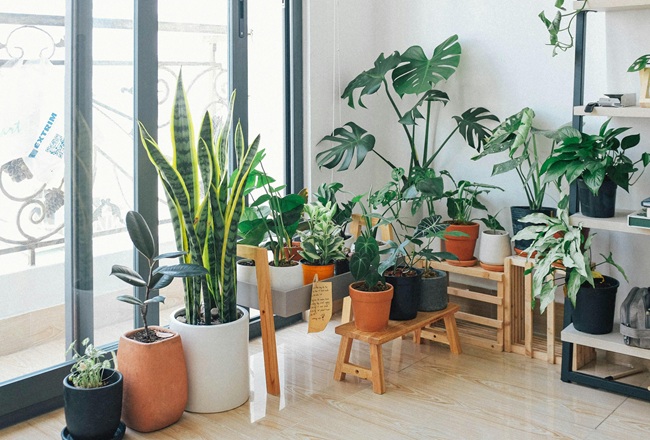
Sometimes, killing a plant accidentally is inevitable. It’s true, we’re just being honest and most plant owners have been in that situation. Especially if you’re new in gardening, it’s almost impossible for you to avoid it. So if ever you’ve experienced plant euthanasia and feel ashamed, don’t hesitate to try again. With practice, you shall avoid committing the same crime. Here are several common challenges with plants and how to solve them.
Over-Watering and Under-Watering
This is one of the most common challenges that a gardener and a plant can have. Over-watering and under-watering your plants can cause its slow death. Over-watering can drown your plants while under-watering them will leave their roots dry and thirsty. You’ll see signs if your plants are over or under watered.
Over-Watering Signs
The soil does not dry and the roots and leaves begin to turn yellow.
Over-Watering Solutions
This depends on the type of plant you are cultivating. Some plants need more water while others need very little. To know if you have given it enough water, use your fingers to check the soil of the plant. If there is dampness in the soil, most plants don’t need watered.
Under-Watering Signs
Drooping stem and leaves.
Under-Watering Solutions
This is the same with over-watering. You should follow the water direction for different plants. Slowly water your plant until you see the soil is evenly wet. Again, use your fingers to check the moisture level of your plant’s soil.
Too Little or Too Much Light
Light is important but too much or little of it can harm plants. Many plants require more light than they receive from a window plus light exposure does not always mean direct exposure to sunlight.
Signs of Too Little Light
The leaves turn a darker green and soon begin to droop
Solution for Too Little Light
Move the plant to a brighter spot where it receives more light and warmth.
Signs of Too Much Light
The leaves begin to burn creating brown spots and/or the color of the leaves starts to turn yellow.
Solution for Too Much Light
Move the plant away from an area where it receives direct sunlight.
Remember that each plant requires a different amount of light but the good news is that most plants are resilient enough that you can how much light they need through experimentation. If a plant isn’t doing well in one location, move it to a different one and see it improves.
Over-Fertilizing and Under-Fertilizing
Over or under fertilizing plants can lead to poor performance and eventually death. Excess nutrients can harm a plant’s roots. Think of it as a person gaining weight because they eat too much. While under-fertilizing can eventually lead to problems because a plant doesn’t get the proper nutrients it needs to thrive.
Signs of Over-Fertilizing
The leaves start to burn and turn brown.
Solution to Over-Fertilizing
Reduce the frequency of doses and use half the manufacturers recommended dosage.
Signs of Under-Fertilizing
Slow growth and no new shoots or flowers.
Solution to Under-Fertilizing
Start a low does fertilizer regimen.
Plant Needs Repotted
Due to growth most plants need to be moved to a larger container every 1 – 2 years.
Signs to Re-Pot
Roots popping out of the soil and a general droopiness in a plant can be signs that a plant needs re-potted.
Solution to Re-Potting
The solution is a simple as re-potting the plant. Make sure to research the individual guidelines for each plant you plan to re-pot.
Moving Them
If a plant is prospering it normally prefers to stay in one location so moving can cause stress.
Signs a Plant Has Been Moved too Much
Yellowing leaves with slow growth.
Solution to Plant Movement
This one is very simple as well; if a plant is doing well, leave it where it is. If you’ve moved a plant and it begins to struggle return it to where it originally was.
Diseases & Pests
Diseases in plants can and will occasionally happen and consistently checking plants for problems helps ensure the problem doesn’t spread to other plants.
Signs of Disease & Pest Problems
Irregular plant growth and identification of pests during a visual inspection.
Solution to Disease & Pest Problems
A quick Internet search will reveal guidelines for solving many disease or pest problems. If you can’t identify the problem, consider contacting a professional to help solve the problem.
Poor Hygeine
A loose stem, dropping leaves, and fall flowers are just normal things with plants, but they can’t be ignored. Keeping plants tidy helps avoid pests and insects from getting started.
Signs of Poor Hygiene
Stunted growth along with disease and pest problems.
Solution to Poor Hygiene
Remove any dead leaves, branches, and flowers from the growing area. Doing this alone helps eliminate a lot of potential problems.
Background information for this article was provided by MCG BioComposites MCGBiomarkers.com.



Comment here